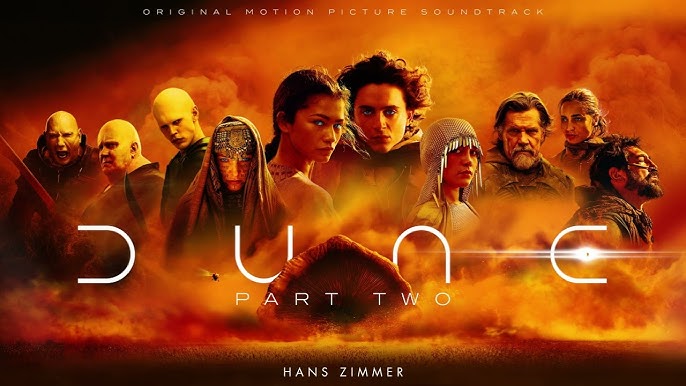
Released in 2024, “Dune: Part Two” marks the eagerly anticipated continuation of Denis Villeneuve’s ambitious adaptation of Frank Herbert’s seminal sci-fi novel. Following the critical and commercial success of “Dune: Part One” (2021), this sequel further explores the complex world of Arrakis, delving deeper into the intricate political and personal struggles that define Herbert’s universe. With Timothée Chalamet, Zendaya, and Austin Butler returning to their roles, and new additions to the cast, “Dune: Part Two” promises an epic cinematic experience filled with grandeur, drama, and stunning visuals.
Plot Overview: The Battle for Arrakis Intensifies
“Dune: Part Two” picks up where the first installment left off, with Paul Atreides (Timothée Chalamet) and Chani (Zendaya) navigating the treacherous landscape of Arrakis, now under the control of House Harkonnen. The sequel continues to explore Paul’s transformation from a young noble into a messianic figure destined to lead the Fremen in a revolution against their oppressors.
The film’s central plot revolves around Paul’s efforts to consolidate his power and rally the Fremen to reclaim Arrakis. The story delves into his growing understanding of the planet’s mysterious desert power, the spice melange, and its profound effects on the universe. As Paul becomes more deeply entwined with the Fremen culture and its prophecies, he must confront both internal and external conflicts, including the political machinations of House Harkonnen and the looming threat of the Emperor himself.
In addition to Paul’s journey, “Dune: Part Two” introduces significant new characters, including Feyd-Rautha Harkonnen (Austin Butler), the ambitious and ruthless heir of House Harkonnen. Feyd-Rautha’s presence adds a new layer of tension and rivalry to the narrative, as his machinations and personal ambitions challenge Paul’s quest for control and justice.
Themes of Power and Destiny
“Dune: Part Two” continues to explore the novel’s central themes of power and destiny. The film delves deeper into the concept of the “Kwisatz Haderach,” the prophesied figure who is destined to reshape the future. Paul’s journey toward fulfilling this destiny is marked by intense personal and political challenges, highlighting the burdens and responsibilities that come with great power.
The theme of power is intricately woven into the fabric of the story, with the struggle for control of Arrakis and its precious spice serving as a backdrop for broader conflicts. The film explores how power corrupts and how individuals must navigate complex political landscapes to achieve their goals.
Destiny also plays a crucial role in the narrative, as Paul grapples with his foretold role as the savior of the Fremen and the universe. His internal struggle with his identity and the weight of his destiny adds emotional depth to the story, making his journey both epic and personal.
Villeneuve’s Vision and Visual Spectacle
Denis Villeneuve’s direction in “Dune: Part Two” is characterized by its epic scale and visual grandeur. Building on the success of the first film, Villeneuve continues to create a richly immersive world that captures the vastness and beauty of Arrakis. The film’s cinematography, by Greig Fraser, further enhances the sense of scale, with sweeping desert landscapes and intricately designed sets that bring Herbert’s universe to life.
The visual effects in “Dune: Part Two” are a testament to the film’s ambitious scope. The depiction of the sandworms, battles, and the spice’s mystical properties are rendered with meticulous attention to detail, creating a visually stunning experience. The film’s use of practical effects and CGI ensures a seamless blend of realism and spectacle, enhancing the story’s epic nature.
Villeneuve’s vision for the film also includes a focus on character development and emotional depth. The director’s ability to balance grandiose action with intimate, character-driven moments ensures that “Dune: Part Two” remains both thrilling and poignant.
Performances and Character Dynamics
The performances in “Dune: Part Two” are a highlight of the film. Timothée Chalamet reprises his role as Paul Atreides with a deepened sense of maturity and complexity. His portrayal captures the internal and external conflicts faced by Paul, adding depth to his character’s journey.
Zendaya’s portrayal of Chani continues to be a central element of the story. Her chemistry with Chalamet adds emotional weight to the narrative, and her character’s role in the Fremen resistance is further explored, providing a strong counterbalance to Paul’s journey.
Austin Butler’s introduction as Feyd-Rautha Harkonnen brings a new dimension to the film. His performance as the ambitious and dangerous heir adds a fresh layer of intrigue and conflict to the story, creating a compelling antagonist whose ambitions pose a significant threat to Paul’s plans.
Reception and Impact
“Dune: Part Two” has been met with widespread acclaim from critics and audiences. The film’s epic scale, stunning visuals, and strong performances have been praised as standout elements. Critics have highlighted the film’s ability to build on the first installment’s foundation while delivering a satisfying and compelling continuation of the story.
The sequel’s success reinforces Denis Villeneuve’s reputation as a master of epic storytelling and visually stunning cinema. “Dune: Part Two” is seen as a landmark entry in the sci-fi genre, showcasing the depth and complexity of Frank Herbert’s universe while providing a thrilling and emotionally resonant experience.
Conclusion
“Dune: Part Two” (2024) is a magnificent continuation of the epic saga, blending grand scale action with deep emotional storytelling. With Denis Villeneuve’s visionary direction, outstanding performances from Timothée Chalamet, Zendaya, and Austin Butler, and a visually stunning presentation, the film offers a powerful and immersive cinematic experience. As a key chapter in the Dune saga, “Dune: Part Two” successfully elevates the story’s themes and characters, solidifying its place as a standout entry in the sci-fi genre.




